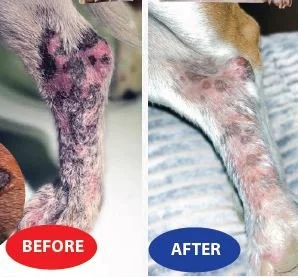BEWARE - Sue's Barley Grass Case
/Sue, a very active 6-year-old cocker spaniel, presented to The Veterinary Centre with recurrent paw licking and discomfort after a weekend away at the lakes.
On examination, a small weeping hole was seen between the toes. A migrating barley grass awn was identified as the most likely culprit.
Barley grass is notorious in active dogs, especially hairy dogs. Embedding in paws, ears, or skin it migrates through soft tissue, causing inflammation, infection, or abscess formation.
Early detection is critical to prevent severe complications. Sue underwent an aneasthetic and the grass awn was successfully located and removed. She recovered fully after a course of anti-inflammatories and antibiotics.
If you notice a weeping foot wound or your pet has a bit of a head tilt or shaking their heads please contact our clinic’s.
You can protect your pet by:
• Avoiding areas with tall seeding grass.
• Clipping long-haired dogs, especially the ears and paws will aid in prevention.
• If your dog has been on an adventure check their coat carefully, removing any seeds. Look behind the ears, around the head and eyes, in the ‘armpits’, groins and between the toes.











